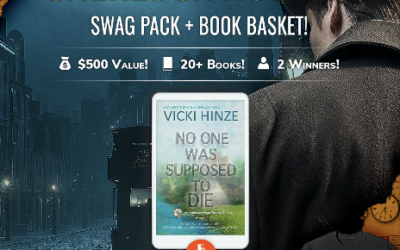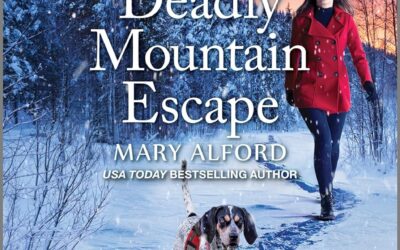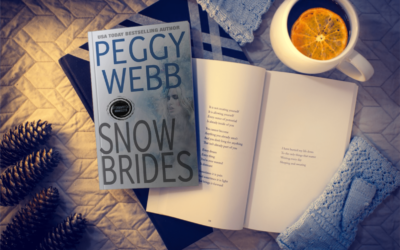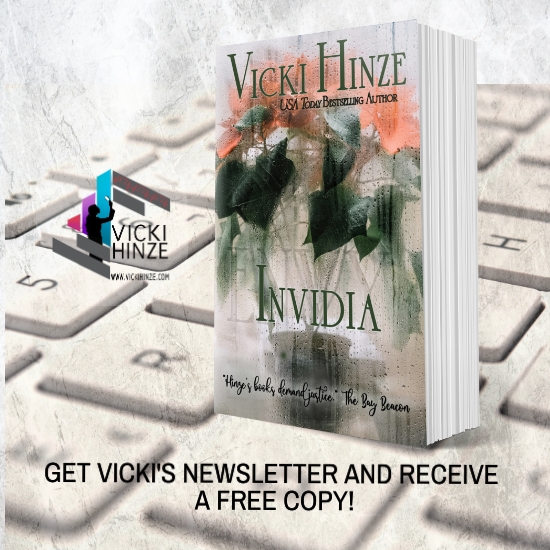Vicki Hinze © 2003-2011
Q. When you’re writing a novel and want it critiqued, I was always told to drop backstory and add the action or move the action up, in order to trickle some information along the way. Why is that? And how do you do that?
A. The rule of thumb is to tell the reader only what s/he needs to know for what is happening in the story at that moment to make sense. Otherwise, the reader gets bogged down in “telling.”
You add in backstory by dribbles. A couple sentences here and there. No large, long blocks. It stops the forward momentum of the story, you see. If you dribble it in, by the time the reader realizes the action has stopped, it’s already started again.
Think of bites. You can’t eat a roast in one bite. But you can eat a roast by eating a lot of little bites. It’s the same thing, for the same reason. So you don’t choke. 🙂
Do the same with backstory. Interject it in small bites so the reader doesn’t choke.
Follow up Question: Easier said than done. That’s harder than it sounds. Any more ideas?
I have to disagree with the “drop the backstory” in the case of getting a critique. The approach for novel-writing remains constant, whether for critique or publication, and that is:
You don’t start the story by telling the reader a bunch of information that s/he doesn’t need to know. Information, backstory, is stagnant. It’s telling versus showing, and it’s boring because the reader’s senses, no matter how engagingly written, are not engaged. They are not actively participating in the story, they’re reading background that might or might not prove necessary to know whenever the action finally starts.
Conversely, you don’t drop a reader into a complex action scene that is difficult to follow or leaves the reader at odds on how to emotionally react to what is happening.
Now you do start the book in the middle of an ongoing situation. One that is action oriented–be that matter out of place, or something else of interest. But because you are soliciting an emotional reaction from the reader, you have to make sure that the method you’re using tugs at a universal emotion. That is, an emotional response to what is happening that is pretty standard for most people across the board.
If you want the reader to react to the action a specific way, which you definitely do, then you’ve got to give them reason to do that. You can’t drop in a long-winded paragraph explaining why they should. The reason is the reader isn’t yet invested in the characters. The characters haven’t yet earned their status as heroines/heroes or villains. But by tapping a universal emotional reaction to the event and having your hero/heroine/villain respond universally to that event, the reader forms an alliance with the character. (Or, in the case of the villain, a disassociation.)
That’s vital. Because backstory is telling and no reader has the patience to be told a lot at the opening of a novel. Considering you have 3 to 4 pages to hook the reader (and the editor and agent so you have readers), you have to forge that emotional connection as soon as possible.
Now backstory is essential to novels. Characters have rich histories and typically their motivations are seeded in their pasts. But in the opening pages isn’t the place to go into depth on those pasts.
The best method of incorporating characters’ histories and motivations is to dribble in history/motives a little at the time. A few sentences here and there interjected into the action informs the reader, gives them the depth and insight they need to maintain that connection and to understand why the character behaves, thinks, and acts as s/he does, but it doesn’t break the forward momentum of the story long enough to disrupt it.
Intersperse background throughout the action, carefully selecting the details that evoke the images and feelings you want the reader to have so that the reader reacts emotionally and logically to the characters the way you want them to react.
With protagonists, that means an alliance. An understanding that is noble. Proof that your character is doing the right thing for the right reason OR the wrong thing for the right reason.
Example. A protagonist’s child is abducted and molested by a pedophile. The parent protagonist hunts down and kills the pedophile.
Now, whether or not you agree that this person deserved killing–with or without a trial–you can relate to what motivated the parent to act.
Now, let’s look at this from the pedophile’s point of view. We read about his stalking the child, picking her out because that’s what he was ordered to do and when he failed to what he was ordered to do, he remembers the beatings, the being locked in the closets. He remembers the bruises and pains. He doesn’t want to take the child. She too will hate the closet and the bruises. But he has no choice.
Now, the villain in this case is clearly twisted and his internal conflict is evident. We don’t agree with what he’s doing. It’s wrong. But we do grasp why he’s doing it.
We know that he’s sick and why. We know what drives the parent and why. We also know pedophiles have a 5% rehabilitation rate–a fact dropped in the parent’s action so we further understand the futility s/he’s feeling and the motivation for taking the action s/he eventually takes.
The parent murders the pedophile. S/he is arrested, put on trial for murder. People are conflicted–some think the man should have been killed. Others think he’s sick, he should have been put into a mental hospital or jailed. Still others are furious the parent is being tried; s/he was obviously pushed over the edge by what happened to his/her child.
Who’s right and who’s wrong here?
Ah, that’s the essence of conflict and it’s also the seat of how you get the backstory in without diminishing the power of the action. Note that neither protagonist nor villain is all right or all wrong in their own minds or ours–except on abducting the child. Note that they suffer their own inner
conflicts that mirror or echo the external conflict. Note that their motivations are clear to us all. Not because they’ve been expressly stated in great detail–they haven’t–but because they are universal. We all can understand how abuse can twist a person. We all can understand how your child being molested can affect a parent. We all understand the tug between rehabilitation and death. All are actions that jerk on universal emotions.
That’s the way to get the backstory in without putting the reader to sleep, and without stopping the action for long while you’re doing it.




